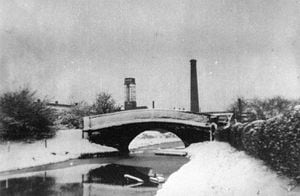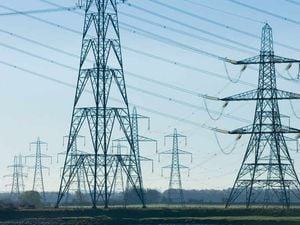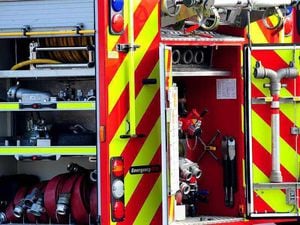Snapshot in time of busy canal network
Renowned industrial historian Barrie Trinder zeroes in on one particular day in history – Sunday, April 2, 1871 – for his latest book in which the focus is on the Midlands canal network.

It was a special day on which to keep tabs on the people who lived and worked on the canal boats on the waterways network radiating from Birmingham, because it was census day, revealing who was where and what they were doing.
In "The Midlands Canals in 1871" Barrie details the presence of occupied boats across the network and along the Shropshire Union Canal, while in the final chapters he draws conclusions from the census about the ways of life of the contemporary boatpeople.
"The book repeoples the waterways, identifying boats in every nook and cranny of the system," said Barrie, who taught in the Shropshire Adult Education service and at the Ironbridge Institute for more than 30 years but moved to teach at the University of Northampton in 1996 and since 2007 has lived in Buckinghamshire.
"It includes more than 200 colour illustrations and, quite apart from what it says about boatpeople in 1871, provides one of the best accounts in print of the waterways system."
The publication of the book has led Barrie to reflect on his own journey of discovery of the Shropshire canals.
Growing up in Banbury, he can remember narrowboats carrying coal on the Oxford Canal.
"During my first job, in West Bromwich, I explored by bicycle many parts of the Birmingham Canal Navigations system, including some lines that have totally disappeared.
"When I moved to Shropshire in 1965 I was charged with the task of fostering interest in local history, particularly in the coalfield in the east of the county, part of which had just been designated as the new town of Dawley – its area was enlarged and renamed Telford in 1968.
"The inclined planes on the tub boat system of the coalfield had just been the subject of a published article by the late Howard Williams and a Birmingham School of Architecture thesis by Roger Tonkinson.
"I can recall fighting my way up the track of the Great Hay incline on a sultry summer evening, some years before it was cleared to become part of the Ironbridge Gorge Museum, and coming upon the ruins of the winding house at the top, which might equally well have been a temple or a fortress.
"I remember seeing excavators reveal the track bed of the inclined plane at Windmill Farm, and trying to make sense of the remains of the Ketley incline from early 19th century maps.
"I watched as more excavators removed the ruins of the inclined plane at Trench, which lifted tub boats up and down for more than 20 years, and was guided by members of the Shropshire Mining Club through the canal basins that served the limestone quarries and mines at Lilleshall.
"Along the Shrewsbury Canal I was lucky to be in time to see the masonry aqueduct at Rodington, some surviving lifting bridges and the warehouse at Longdon-on-Tern which listed the destinations to which goods were once conveyed by the Shropshire Union Carrying Co. I was delighted in 2016 to be able to speak to the Shrewsbury & Newport Canal Society in the wharf that the society is restoring at Wappenshall.
"The need quickly to prepare a lecture on Thomas Telford led me to follow the line of the Birmingham & Liverpool Junction Canal – the Shropshire Union main line – taking photographs of its fearsomely deep cuttings and lofty embankments, as well as some warehouses and waterside pubs, at one of which I enjoyed succulent steaks many times during my years in Shropshire.
"I explored the former Ellesmere Canal more gradually, but in due course found and took photographs of its less well-known features, the warehouse at Edstaston, the lime kilns at Quinabrook, and the wharf at Weston Lullingfields which was a wonderful time capsule in the mid-1960s.
"When leading summer holiday guided walks in the 1970s and 1980s I learned, chiefly from old maps, of the many wharfs in the Oswestry Coalfield where narrow boats picked up coal, and of those at Llanymynech where they loaded limestone and lime. I can recall with particular pleasure taking part with Chris Eldon Lee in a series of BBC Radio Shropshire programmes from a boat that traversed the whole navigable length of the Ellesmere Canal.
"My most vivid memories of the Shropshire Union system are of the great aqueduct at Pontcysyllte, which I first saw on a crisp and stunning winter’s day in January 1966.
"I have since steered a boat across the aqueduct several times and have been there with many groups, on a mystically misty Celtic morning with art students, with students of architecture from a university in Germany, and with new students at the Ironbridge Institute. One of the latter did not know details of the visit and was kept in the cabin of the boat until she was enticed out to look down on a cricket match 127 feet below.
"I was particularly pleased to be able to contribute to the document that successfully nominated the aqueduct and nearby stretches of canal as a UNESCO World Heritage Site."
Barrie added that "The Midlands Canals in 1871" is distributed by the wholesaler Ludlow Books (ludlowbooks@btconnect.com) and is available from most bookshops in Shropshire.





